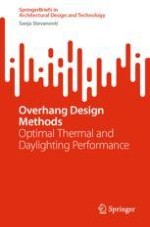2022 | OriginalPaper | Buchkapitel
4. Design Methods for Particular Overhang Types
verfasst von : Sanja Stevanović
Erschienen in: Overhang Design Methods
Verlag: Springer Nature Singapore
Aktivieren Sie unsere intelligente Suche, um passende Fachinhalte oder Patente zu finden.
Wählen Sie Textabschnitte aus um mit Künstlicher Intelligenz passenden Patente zu finden. powered by
Markieren Sie Textabschnitte, um KI-gestützt weitere passende Inhalte zu finden. powered by
